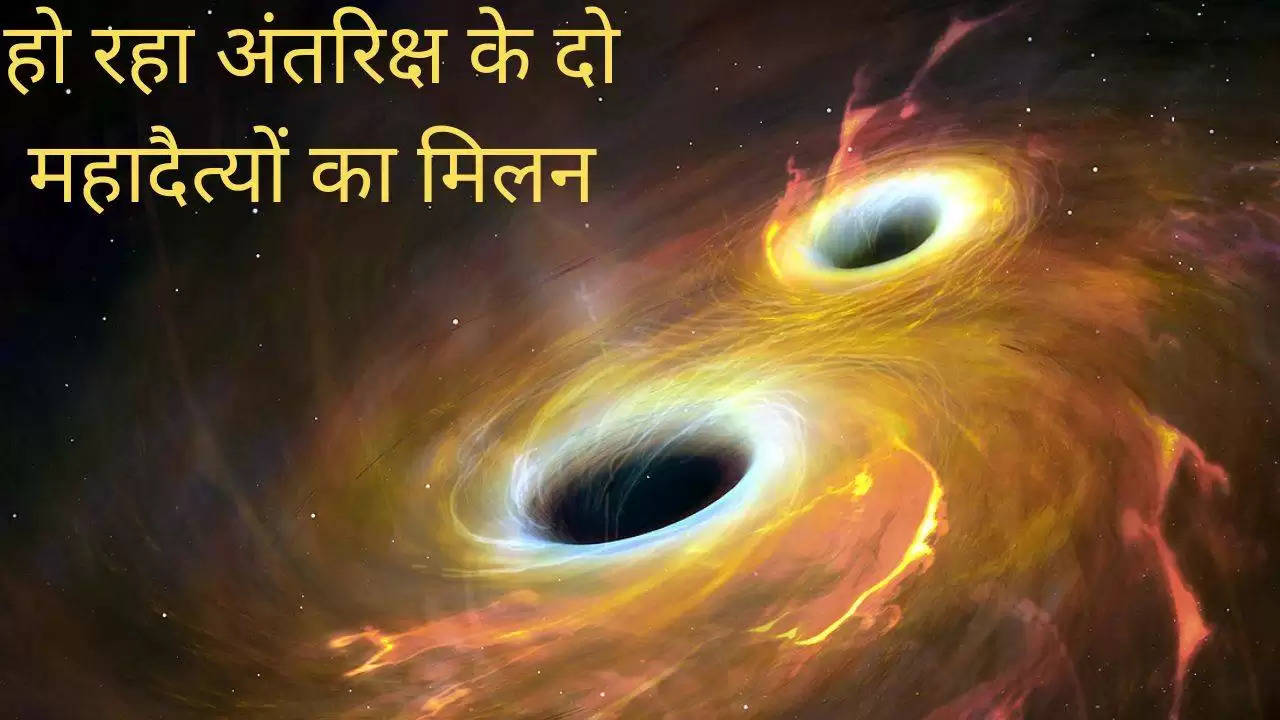Two giant black holes 50 million times bigger than the Sun are merging, know everything about them here

Science News Desk –Scientists have seen two black holes formed at the beginning of the universe merging into each other. This is the most distant merger of all black holes observed so far. According to scientists, they have been seen at a distance of more than 13 billion light years. That means, when this black hole was formed, the age of the universe would have been only 740 million years. Scientists watched their encounter through the lens of the James Webb Space Telescope (JWST). Both black holes are about 50 million times more massive than our Sun. These may not be the oldest or largest black holes, but they have grown very rapidly. According to the European Space Agency (ESA), the new discovery challenges a major dogma of astronomy. After all, how could objects become so large and grow so fast in the early stages of the universe?
How did scientists observe the merger of black holes?
To understand black hole mergers, researchers focused JWST's infrared cameras on a black hole system called ZS7. It is located in the early era of the universe known as the Cosmic Dawn. We already knew that this system contained an active galactic nucleus (AGN) – a supermassive black hole at the center of the galaxy. JWST captured the motion of a dense cloud of gas around the black hole. It turned out that it was getting bigger and bigger. JWST also revealed the location of another black hole nearby that is possibly merging with the first black hole.
Black holes increase their size by merging!
According to the study, supermassive black holes have been playing an important role in the evolution of galaxies since the beginning. The new discovery shows that mergers can cause black holes to grow so fast, even at the beginning of the universe. Black holes are extremely massive objects from whose gravity even light cannot escape. Black holes are thought to form when massive stars collapse in supernova explosions. They keep increasing their size by swallowing dust, gas, stars and other matter in the universe.
The hungriest and most active black holes can reach supermassive levels. Their size can range from thousands of times to billions of times larger than our Sun. To become so big, black holes have to merge with larger black holes in nearby galaxies.

